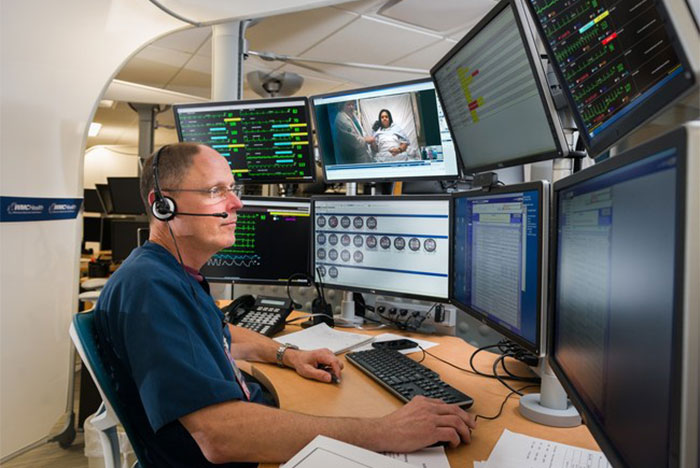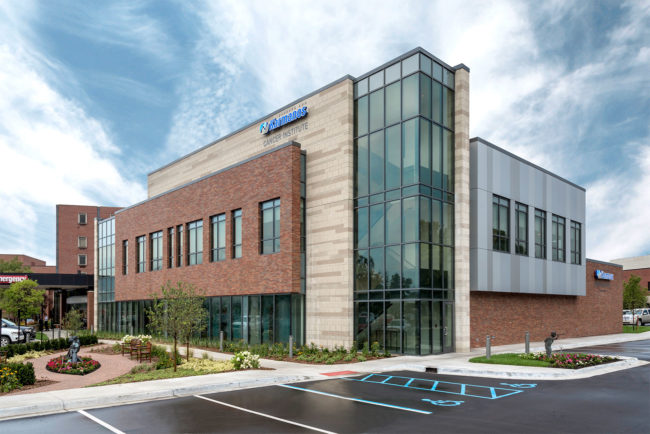
Medical and clinical specialists monitor patients from a 5,500-square-foot eHealth operations center.
The Westchester (N.Y.) Medical Center Health Network's (WMCHealth's) telemedicine system now links with HealthAlliance Hospital–Broadway Campus, Kingston, N.Y., the first of three hospitals in the same Hudson Valley health system eventually to benefit from the high-tech remote care.
WMCHealth's secure, high-definition telehealth operations center offers HealthAlliance patients personalized care from advanced specialists without patients' traveling to see caregivers in person.
The network’s medical and clinical specialists monitor patients from a 5,500-square-foot eHealth operations center in Valhalla, N.Y. The specialists complement rather than replace the dedicated health care teams at any of the hospitals served by the system.
Stroke telemedicine, also called telestroke, is WMCHealth's first eHealth program now in use at the Broadway campus. It will be followed in the coming weeks by telepsychiatry, teletrauma and tele-ICU services or eHealth services at intensive care units.
Besides the Broadway campus, telepsychiatry will be available at HealthAlliance Hospital–Mary's Avenue Campus, also in Kingston, and Margaretville (N.Y.) Hospital, another member of HealthAlliance.
Teletrauma will be used in the emergency departments of the Broadway campus and Margaretville Hospital. Tele-ICU will be offered at both the Broadway and Mary's Avenue campuses.
The new programs will connect all HealthAlliance hospitals with the eHealth operations center, which is staffed 24/7 by a wide array of medical specialists who use 20 multimedia stations to monitor patients in real time.
"With WMCHealth's eHealth program, clinical specialists in the operations center can evaluate patients, share information and discuss patient issues with us in Kingston as if they were here," says Paul Llobet, M.D., chief medical officer, HealthAlliance of the Hudson Valley. "The videoconferencing capabilities enable split-second medical decisions that save lives."
With eHealth's tele-ICU program, doctors and nurses trained in critical care medicine will use sophisticated equipment at the operations center to monitor vital signs around the clock and collaborate with HealthAlliance bedside teams.
Vital signs, medications, blood test results, X-rays and other pertinent information from bedside monitors will be sent to the eHealth control center through secure, high-speed data lines. This information will appear on the control center's monitors exactly as it appears to bedside care teams at the Broadway or other campuses in the network.
Critical care specialists who watch monitors that continually collect data will support HealthAlliance clinicians in spotting signs of imminent trouble. If a HealthAlliance patient needs attention, physicians at the eHealth center can zoom in close enough on a two-way camera to read the tiny print on an IV bag or to examine a patient's pupils. The eHealth team also can consult directly with bedside doctors, nurses, family members and patients.
Incorporating telehealth in ICUs decreases mortality 20 percent and reduces the length of hospital stays 26 percent, according to a study published in the Journal of the American Medical Association.
To protect patient privacy, the cameras are off and turned away from patients when HealthAlliance and the eHealth center are not communicating.
"As the Hudson Valley region's advanced care network, WMCHealth is committed to providing the highest level of care as close to home as possible," said Michael Israel, president and CEO, Westchester Medical Center Health Network.
Corey Scurlock, M.D., medical director, WMCHealth eHealth Center, is confident the program will deliver the same success at the Hudson Valley hospitals that join the system as with others already participating. "Telehealth is a proven advance in medicine that leads to better patient outcomes," he says.





